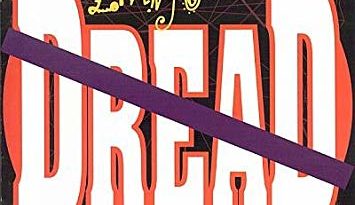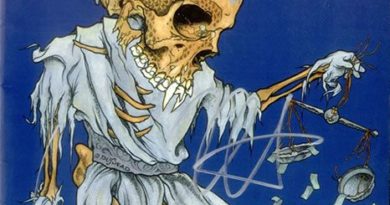Blood, Fire and Death
A new book delves deep into the abyss of Swedish metal

When it comes to music, there’s no arguing that Sweden punches way above its weight.
A small, dark country in Northern Europe, Sweden has somehow produced two of the biggest pop groups in Earth’s history – ABBA and Ace of Base – as well as mega-producers Max Martin and Shellback. On the heavier side, Sweden has absolutely dominated the global metal scene since the 1990s, producing bands like Amon Amarth, Arch Enemy, At the Gates, Dark Tranquillity, Dismember, Entombed, Ghost, Grave, the Haunted, Hypocrisy, In Flames, Katatonia, Meshuggah, Opeth, Soilwork, Therion, Tribulation, Unleashed, and on and on.

With this in mind, you’d figure a book about Swedish metal would be a slam-dunk, right? And indeed it was. Back in 2008, Daniel Ekeroth (currently the bassist for the progressive death metal act Usurpress) wrote Swedish Death Metal, an exhaustive guide to the early days of the scene, including reviews of virtually every album, demo tape and a sparsely attended local gig by the bands that created the sound that swept the world in the early 1990s. It was a story of teenagers and young men creating something out of nothing, with no idea of the impact it would have. Its exhaustiveness was a virtue, but also a sign of the kind of mindset shared by underground music obsessives, regardless of genre.
The new Feral House book Blood Fire Death: The Swedish Metal Story, by Ika Johannesson and Jon Jefferson Klingberg, makes no attempt to be equally detailed or in-depth. Instead, the authors jump in and out of their homeland’s hard rock and heavy metal history, beginning in the 1970s with bands like November, Neon Rose, and Heavy Load. In subsequent chapters, they profile individual musicians or bands that have particularly compelling stories, like Quorthon of black metal pioneers Bathory; Entombed (they do an excellent job of dissecting the band’s split into two groups); the late Jon Nödtveidt of Dissection; the late Pelle “Dead” Ohlin of Mayhem; and more. Other, broader chapters explore the arson and murder that marked the early black metal scene, the role of women within the Swedish metal underground, and the scene’s flirtation with extreme right-wing politics. A chapter on “suicidal/depressive black metal” act Shining gets into the larger issue of suicide and self-harm among Swedish youth, and features some of the best writing of the entire book. By contrast, the chapter on right-wing politics is largely a failure, because nobody interviewed really wants to talk about their views.

Throughout the book, Johannesson and Klingberg insert themselves into the narrative, making no pretense to journalistic objectivity. They’re fans of the music, and they prefer to serve as informed tour guides. That said, they never take artists’ claims at face value, and repeatedly deflate any larger-than-life pretensions, revealing which artists lived with their parents during their bands’ heydays (or in the case of Bathory, revealing how Quorthon’s father was his creative partner, producing all of the band’s albums) and allowing others to discuss exactly how little money they earn from their music, and what they do to actually make a living.

Ultimately, this book’s subtitle, The Swedish Metal Story, isn’t really accurate. Johannesson and Klingberg aren’t trying to give an overview of the entire scene, or even pretend that there is one such thing as “Swedish metal.” Instead, there are a number of disparate scenes, each with its own commercial and aesthetic goals. But as a collection of portraits of those musicians and their scenes – some fascinating, others decidedly less so – it’s well worth a read.




